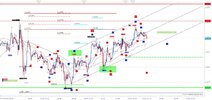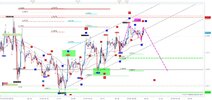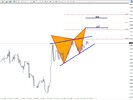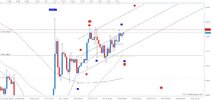Hi Sive and thank you for your weekly update.
I'm asking you a question, but please answer only if and when you have time

and first of all enjoy your vacation.
I just started exploring the options (and i understand they are a very sophisticated instrument). Just a little idea: as we trade (probably most of time) using stop loss and take profit, we have a predetermined risk reward ratio. Let's say we are going long, with a stop loss 100 pips below the entry and a take profit 200 pips above. If we trade fx spot market, futures (but also stocks, bonds etc) we have a RR of 2:1. But.. if we buy a deep out of money call (because the gamma and the delta which isn't fixed) when the underlying goes up we benefit also from the increasing delta (just like we had a position that auto increase itself) and also when the underlying goes down we benefit from decreasing delta (again, just like if the position were auto decreasing). So trading out of money options seems a easy way to improve the risk reward ratio. Do you think this make sense or not? I suspect that the time decay of options is offsetting that advantage of variable delta.
Thank you and have fun time

EDIT: just to explain a little better my idea: i'm not talking about buying options and hold it until expiration. I'm thinking about trading options using signals on the underlying market in order to benefit from the variable delta of the options before the expiring date (so buy a deep out of money call instead going long the underlying or buy a deep out of money put instead shorting the underlying. And when we have an exit signal from the underlying (because of the stop loss or the taking profit) we liquidate the option position).



